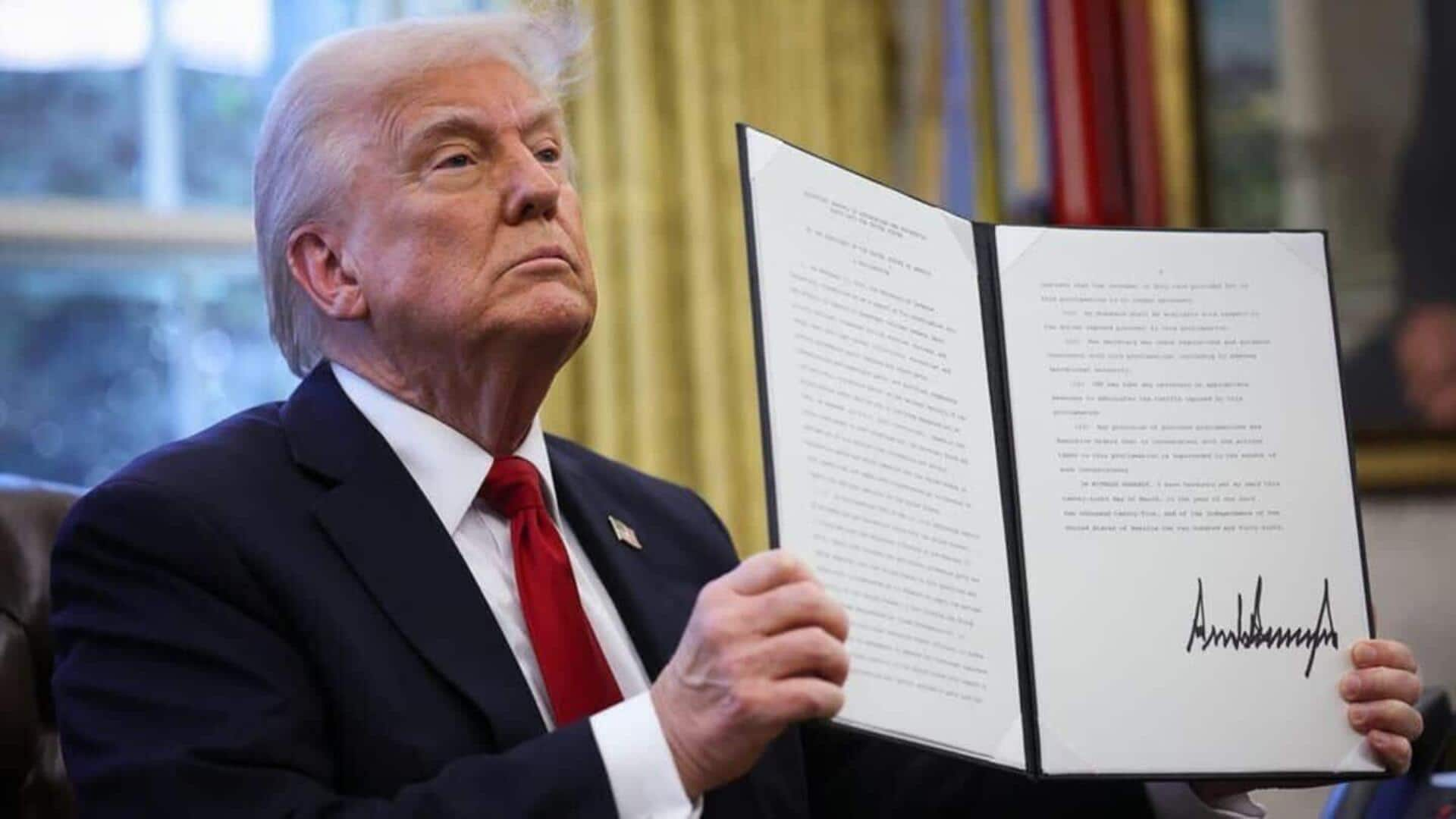
Trump's tariffs: 26% duty on India kicks-in amid global uncertainty
What's the story
The 26% import tariff on Indian goods, introduced under US President Donald Trump's expansive trade agenda, officially came into effect today. The tariff was announced during the "Make American Wealthy Again" event on April 3, where Trump slammed India's trade practices. He said, "India very, very tough. The Prime Minister just left and is a great friend of mine, but you are not treating us right. They charge us 52% and we charge them almost nothing."
Market response
Tariff announcement impacts pharmaceutical sector
Earlier today, Trump suggested that new tariffs targeting the pharmaceutical sector could be announced soon, a category not covered under the current 26% import duty. This has shaken the pharmaceutical sector, with shares plunging up to 6%. Gland Pharma witnessed a 6% drop in its shares to ₹1,340. It was followed by Aurobindo Pharmaceuticals and Dr Reddy's Laboratories, which fell by 5% and 4.2%, respectively. Nifty50 and Sensex also fell today amid rising trade tensions, tracking a global sell-off.
Plan execution
Tariff implementation part of 2-tier plan
The tariffs are part of a two-tier plan, with a flat 10% baseline tariff on all US imports coming into force on April 5. This was initiated under a national emergency order citing trade deficit-related security concerns. Starting today, higher tariffs (10%-104%) apply to specific countries and products, including Indian goods. Before this announcement, India's Ministry of Commerce and Industry had been assessing various scenarios to manage the likely fallout.
Diplomatic gesture
India expresses readiness to offer tariff cuts on American imports
India has shown willingness to provide tariff cuts on more than 50% of American imports worth $23 billion. The move comes as part of diplomatic efforts amid escalating trade tensions. In 2024, the bilateral trade between the two countries was $124 billion, with India exporting goods worth $81 billion to the US and importing goods worth $44 billion. This led to a trade surplus of $37 billion for India.
Economic impact
India's economy to withstand Trump tariffs, say experts
Despite the tariff shock, India isn't likely to suffer a severe economic setback. Bernstein predicts a short-term dip followed by recovery in the second half of the year. PHD Chamber of Commerce and Industry (PHDCCI) estimates the tariff will only have a 0.1% short-term impact on GDP. ASSOCHAM President Sanjay Nayar said India's inward-looking economy offers a buffer, making it less exposed than other Asian markets.
Sectoral effects
Mixed sectoral impacts from Trump's tariffs
The wider trade shift owing to tariffs poses challenges and opportunities. Indian steel, aluminum, and auto component exports now attract a 26% tariff, while pharmaceuticals, copper energy goods, and semiconductors are exempted. The India Electronics and Semiconductor Association (IESA) welcomed semiconductors' exemption as they play a critical role in global supply chains. Despite higher tariffs on electronics exports to the US, India's position has strengthened against China, Vietnam.
Industry outlook
Indian textile industry and agricultural exports may gain
The US continues to be the largest destination for Indian textiles, contributing nearly $10 billion to the sector's $36 billion exports in 2023-24. Analysts believe US buyers could switch sourcing from countries such as Vietnam, Bangladesh, and China to India in light of the new tariff landscape. Agricultural economist Ashok Gulati told PTI that India has a tariff advantage in agricultural exports, especially seafood and rice.